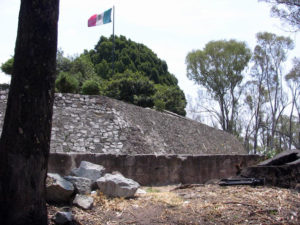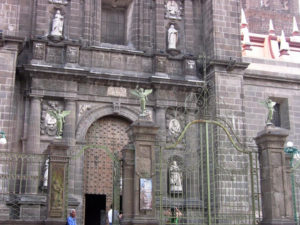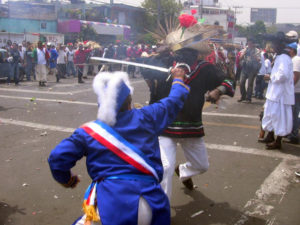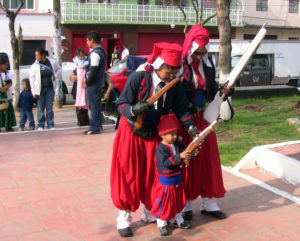It’s easy to enjoy a Cinco de Mayo celebration. Many of the festivities in the U.S. have grown so that now they are generally larger than those in Mexico. Half a million people show up for the annual event in Los Angeles alone. In Mexico, there are parades and parties in places like Puebla and Mexico City, and some smaller towns stage children’s events to mark the occasion on May 5th. Cheering and whistling to the music of mariachi musicians, clapping to the steps of folklórico dancers and savoring traditional Mexican foods is attractive to almost anyone — Mexican or not.
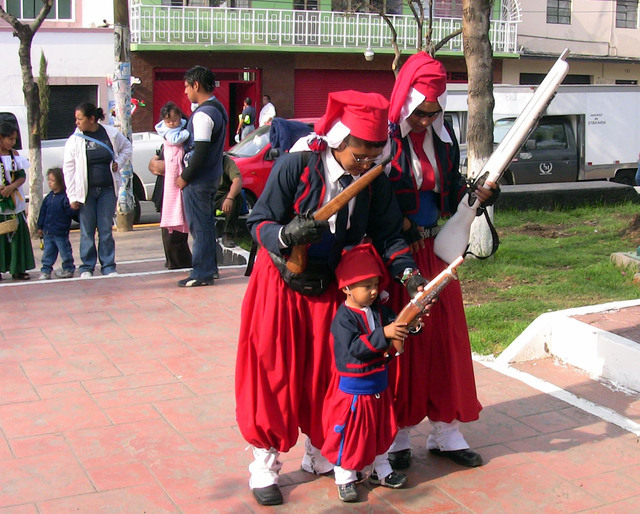
5 de mayo – Who? Where? Why?
Ask about the history behind these celebrations, and a few may be able to tell you that the Mexicans defeated an invading French army on that date in 1862. Beyond that — except maybe in Puebla — general knowledge of the circumstances becomes sketchy. Why were the French there? What happened next? Did the French just go away? Many teachers in the U.S. still tell their classes that May fifth is Mexican Independence Day, which is dead wrong. (Independence Day in Mexico is September 16th.)
France’s emperor sees an opportunity
Even though the United States had issued the “Monroe Doctrine” warning European countries not to grab territory in the western hemisphere, Emperor Napoleon III of France decided to do just that. He ordered his generals to take over Mexico, and then — using Mexico as a “base” — help the Confederates win the Civil War against the United States.
What if they had succeeded?
The United States would never become the significant world power that it is today. Another country would occupy the territory where the southern U.S. states now stand, and the nation we know as Mexico would probably still be dominated by France. Instead, the Mexicans not only took their country back, but enforced the Monroe Doctrine and influenced the outcome of the American Civil War.

Mexico was bankrupt
President Benito Juárez and his liberals had just won a three-year Mexican civil war in 1861, when they discovered that the fleeing conservatives had emptied the treasury. The Mexican Congress suspended all payments on foreign debt until they could work something out with their creditors. The U.S. ambassador to Mexico had drawn up a treaty to give Mexico a bail-out loan, but by the time it reached Washington, D.C., the American Civil War had started and the U.S. was in no position to lend any money.
France’s Napoleon III saw a chance to halt U.S. expansion and reestablish French influence in the western hemisphere. He persuaded the British and the Spaniards to join him, and all three countries landed troops in Veracruz, the major port city on the Gulf of Mexico, in December of 1861 and January of 1862. Britain and Spain soon discovered that they were being used as “cover” for the French, who wanted not only to collect debts but to conquer Mexico. They negotiated their own settlements with the Mexicans and headed back to Europe.
The road inland to Mexico City led right through Puebla, where the local elite were actually hoping for a French victory. The population was very pro-European, wearing British clothing styles and speaking their Spanish with a French accent to impress each other. Some of the restaurants in town were even printing their menus in French, although the breakfast specialty at some of them was broiled armadillo.
French General Charles Latrille, the Count of Lorencez, apparently thought all he had to do was show up in Mexico City and the country would be his. He disregarded the fact that many of his troops had been weakened — and hundreds had died — of yellow fever in tropical Veracruz. As he began the march toward Puebla and on to Mexico’s capital, he sent word to the emperor that he was already “the master of Mexico.”
It didn’t turn out that way.
El 5 de mayo de 1862
Lorencez’s top generals told him at a war council the night before the battle that Puebla had never been taken from the north. He rejected their advice and ordered that the French would attack the very next morning – from the north.
As Lorencez sent wave after wave of French troops struggling to climb up Guadalupe Hill, the Mexicans had only to aim their weapons downward to pick off the enemy in their tracks. The French artillery ran out of ammunition after just over an hour. The few French soldiers who reached the tops of ladders at the forts were quickly beheaded by machete-wielding Zacapoaxtla Indians. A thunderstorm left the French attackers staggering in the blinding downpour while the Mexicans took cover, and the Mexican cavalry under General Porfirio Diaz mopped up the remaining combatants as French horses and their riders slipped and fell on the muddy slopes.
The French did not return to Puebla until March of 1863 – ten months later. By then, the town had been well-fortified and withstood a siege of nine weeks before the Mexicans were forced to surrender from starvation. The new French commandant — General Forey — moved on to Mexico City and by June of 1864 welcomed Austrian Archduke Ferdinand Maximilian as the new emperor.
All we command is a stretch of roadway
It didn’t take long for Napoleon III to realize that his little Mexican “emperor” wasn’t working out. French soldiers were writing home to their families that they would take over a town for a few days, but when they left the Mexican forces would move back in right behind them. “All we control is the road between Veracruz and Mexico City,” one of them wrote. Even that was an exaggeration: the bandidos owned all the highways at night.
As the U.S. won its Civil War against the Confederacy, months of lobbying and networking by Mexico’s young ambassador to Washington paid off. Generals Grant and Sherman kept President Abraham Lincoln and his Secretary of State busy watching the victory parade, while General Sheridan ran his troops up and down the border in maneuvers designed to look as though they were about to invade Mexico. This touched off panic in both Mexico City and Paris.
Napoleon III pulled his French troops out of the country, leaving Emperor Maximilian on his own. Maximilian led his “Imperialista” army (with 14-and-15-year-old lieutenants) to Querétaro, two hours north of Mexico City on today’s highways, and quickly found himself and his 7,000 troops surrounded by 41,000 Mexicans up in the hills surrounding the city. Their artillery could reach any house in town. Maximilian was soon captured, and on June 19, 1867 he was executed by a firing squad on the Hill of the Bells overlooking Querétaro.
Almost a month later, on July 15th, President Benito Juárez returned to the capital, and the Mexicans finally took their country back. As the famed Mexican historian and philosopher, Justo Sierra, wrote: “The fifth of May set back Napoleon’s designs in regard to the United States a full year.” From a purely military perspective, the battle didn’t amount to much. However, wrote Sierra, “its moral and political results were immeasurable. The entire nation was thrilled with enthusiasm. Surely no Mexican, whatever his party, was downcast by the victory. The remotest Indian village felt the electric current of patriotism that sped like lightning through the land, awakening many a sleeping conscience. The people were inspired to make a supreme effort.”
As for Mexico’s entire seven-year struggle to regain its sovereignty, Sierra wrote: “Mexico redeemed her independence… and won for herself a secure place in history.”
Donald Miles is author of the book Cinco de Mayo: What is everybody celebrating?

